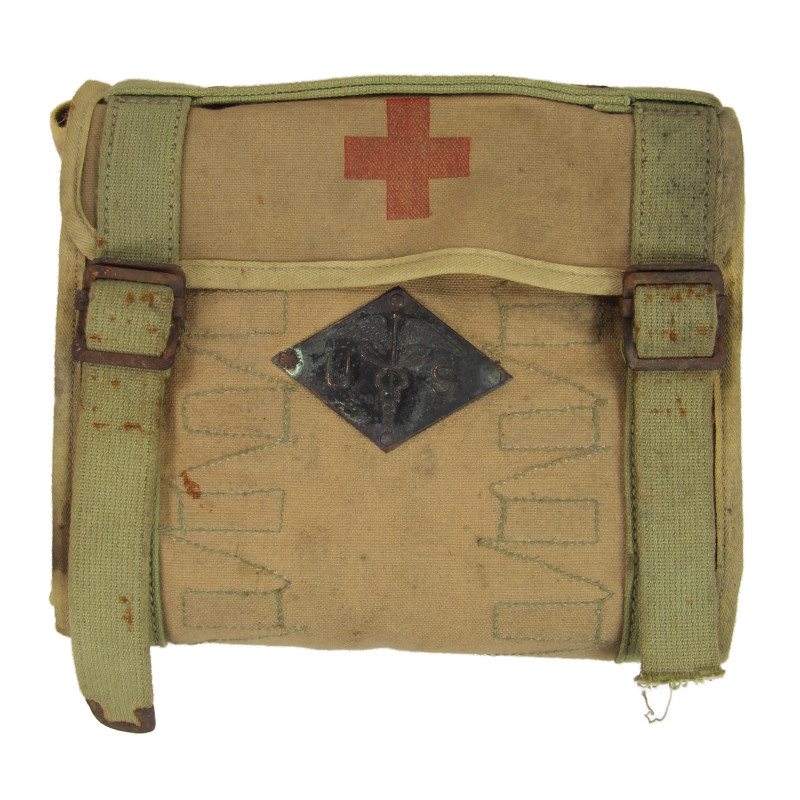









Scarce genuine WWI US Army Medical Department heavy duty canvas case, featuring a red cross and a metal badge adorned with initials US and the caduceus, designed for carrying twenty tubes containing medicine in tablet form. Various accessories can fit into the two small inner compartments. This Apothecary Kit was intended for medication and not for surgery instruments.
The present case is in good overall condition despite oxidation of the buckles. All Eagle snap fasteners in working order. The tip of one of the securing straps is missing.
Empty.
You might also like

Scarce genuine WWI US Army Medical Department heavy duty canvas case, featuring a red cross and a metal badge adorned with initials US and the caduceus, designed for carrying twenty tubes containing medicine in tablet form. Various accessories can fit into the two small inner compartments. This Apothecary Kit was intended for medication and not for surgery instruments.
The present case is in good overall condition despite oxidation of the buckles. All Eagle snap fasteners in working order. The tip of one of the securing straps is missing.
Empty.
The historical artifacts for sale at PARATROOPER’s are intended for collectors, history enthusiasts, historians and museum curators.
These items do not glorify or promote any of the political, ideological or racial opinions related to the global conflicts that bathed the 20th century in blood.
Besides, we remind you that Article R.645-1 of the French Penal Code establishes fines applicable to fifth class contraventions (except in the specific cases of a filming, show or exhibition which refer to historical events) for any individual who wears a uniform, insignia or symbol reminiscent of those worn by members of the various organizations declared criminal in application of Article 9 of the Charter of the International Military Tribunal annexed to the London Agreement of August 8, 1945 – SS, SD, Gestapo, Nazi leaders (the Führer, the Reichsleitung, the Gauleiters and their main collaborators, the Ortsgruppenleiter, the Zellenleiter and the Blockleiter), or reminiscent of those worn by any person found guilty, by a French or International Jurisdiction, of one or several crimes against humanity established by Articles 211-1 to 212-3 or mentioned in Law No. 64-1326 of December 26, 1964.
The Code provides additional penalties, including the confiscation of the items used or intended for committing the offence.



